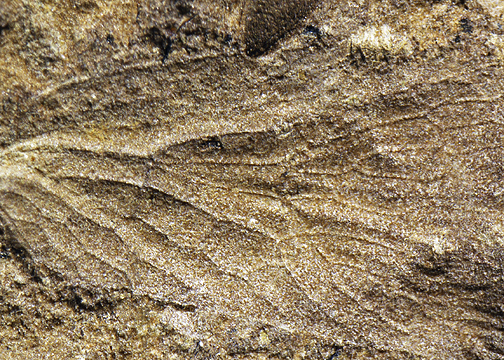Abstract
Eomeropidae is a relict family of Mecoptera with the sole living species, Notiothauma reedi McLachlan, 1877, inhabiting western parts of southern Chilean Valdivian forests. The family was more widely distributed in the Mesozoic and Cenozoic, being known from 13 fossil species ranging in age from Early Jurassic to Oligocene (Soszyńska-Maj et al., 2016; Archibald & Rasnitsyn, 2018; Zhao et al., 2019; Zhang et al., 2022). The oldest fossil eomeropid, Jurachorista bashkuevi Soszyńska-Maj, Krzemiński, Kopeć & Coram, 2016, was described from the Lower Jurassic Charmouth Mudstone Formation of Dorset and so far is the only find of the family in Britain and in Europe. Here we report the second one, from the Lower Cretaceous (lower Barremian) upper Weald Clay Formation of Smokejacks brickworks, Surrey. The new species is most closely allied to Jurathauma Zhang, Shih, Petrulevičius & Ren, 2011 and Typhothauma Ren & Shih, 2005 from the Middle Jurassic and Lower Cretaceous of China respectively. However, the incomplete preservation hampers its generic identification, although the type locality is an active site (Jarzembowski, 2021) and additional material may be recovered in future.
References
Allen, P. (1976) Wealden of the Weald: a new model. Proceedings of the Geologists’ Association, 86 (4), 389–437. https://doi.org/10.1016/S0016-7878(75)80057-5
Austen, P.A. & Batten, D.J. (2018) English Wealden fossils: an update. Proceedings of the Geologists’ Association, 129 (2), 171–201. https://doi.org/10.1016/j.pgeola.2018.02.007
Austen, P. & Jarzembowski, E. (2018) Field meeting report: ‘Smokejacks’ brickworks—2018. Hastings and District Geological Society Journal, 24, 17–19.
Austen, P. & Jarzembowski, E. (2019) Field meeting report: ‘Smokejacks’ brickworks—2019. Hastings and District Geological Society Journal, 25, 25–28.
Archibald, S.B. & Rasnitsyn, A.P. (2018) Two new species of fossil Eomerope (Mecoptera: Eomeropidae) from the Ypresian Okanagan Highlands, far-western North America, and Eocene Holarctic dispersal of the genus. Canadian Entomologist, 150 (3), 393–403. https://doi.org/10.4039/tce.2018.13
Crampton, G.C. (1930) The wings of the remarkable archaic mecopteron Notiothauma reedi McLachlan with remarks on their protoblattoid affinities. Psyche, 37 (1), 83–103. https://doi.org/10.1155/1930/53195
Jarzembowski, E.A. (1995) Early Cretaceous insect faunas and palaeoenvironment. Cretaceous Research, 16 (6), 681–693. https://doi.org/10.1006/cres.1995.1042
Jarzembowski, E.A. (2021) Fossil insects 10 years after the Geological Conservation Review (Great Britain). Palaeoentomology, 4 (4), 313–318. https://doi.org/10.11646/palaeoentomology.4.4.3
Novokshonov, V.G., Ross, A.J., Cook, E., Krzemiński, W. & Soszyńska-Maj, A. (2016) A new family of scorpionflies (Insecta; Mecoptera) from the Lower Cretaceous of England. Cretaceous Research, 62, 44–51. https://doi.org/10.1016/j.cretres.2016.01.013
Peña, L.E. (1967) Ambiente y comportamiento de Notiothauma reedi McLachlan (Mecoptera, Notiothaumidae). Noticiario Mensual del Museo Nacional de Historia Natural, 133, 9.
Ren, D. & Shih, C.K. (2005) The first discovery of fossil eomeropids from China (Insecta, Mecoptera). Acta Zootaxonomica Sinica, 30 (2), 275–280.
Soszyńska-Maj, A., Krzemiński, W., Kopeć, K. & Coram, R.A. (2016) Phylogenetic relationships within the relict family Eomeropidae (Insecta, Mecoptera) based on the oldest fossil from the Early Jurassic (Sinemurian) of Dorset, southern England. Journal of Systematic Palaeontology, 14 (12), 1025–1031. https://doi.org/10.1080/14772019.2016.1139007
Taylor, K. (1991) Phosphatic concretions in the Wealden of South-East England. Proceedings of the Geologists’ Association, 102 (1), 67–70. https://doi.org/10.1016/S0016-7878(08)80058-2
Zhang, J.X., Shih, C.K., Petrulevičius, J.F. & Ren, D. (2011) A new fossil eomeropid (Insecta, Mecoptera) from the Jiulongshan Formation, Inner Mongolia, China. Zoosystema, 33 (4), 443–450. https://doi.org/10.5252/z2011n4a2
Zhang, J.X., Shih, C.K. & Ren, D. (2012) A new fossil eomeropid (Insecta, Mecoptera) from the Yixian Formation, Liaoning, China. Acta Zootaxonomica Sinica, 37 (1), 68–71.
Zhang, K., Zhao, X.D., Bashkuev, A.S. & Xiao, C.T. (2022) The first eomeropid (Insecta, Mecoptera) from mid-Cretaceous Myanmar amber. Cretaceous Research, 133, 105140. https://doi.org/10.1016/j.cretres.2022.105140
Zhao, X.D., Zhao, X.Y., Chen, L., Zhang, Q. & Wang, B. (2019) A new species of Eomeropidae (Insecta: Mecoptera) from the Middle Jurassic of China. Proceedings of the Geologists’ Association, 130 (6), 691–695. https://doi.org/10.1016/j.pgeola.2019.10.005


